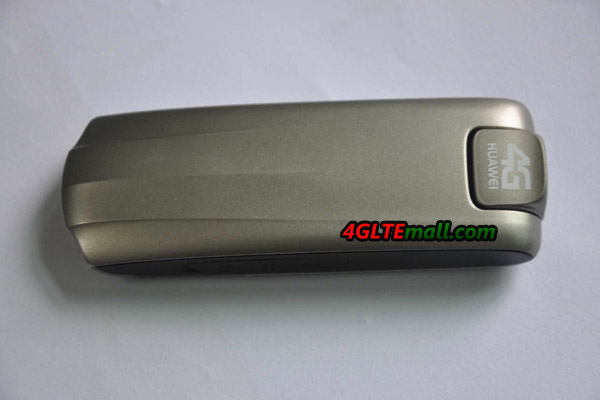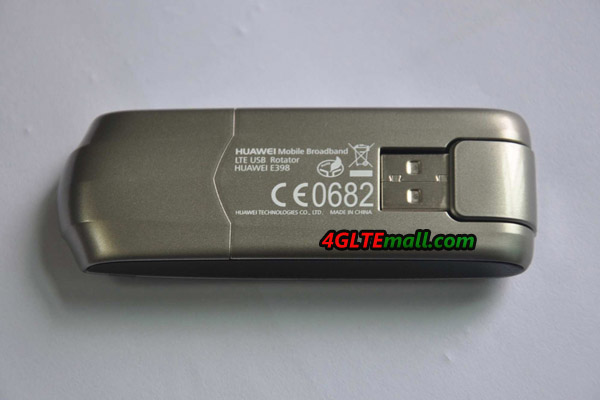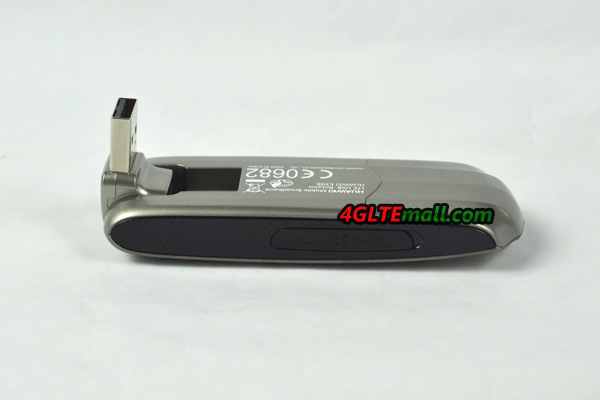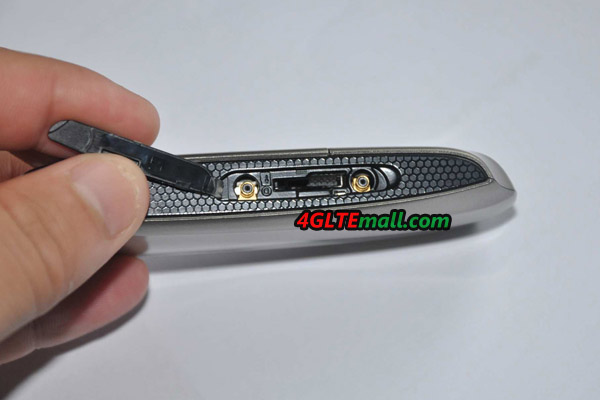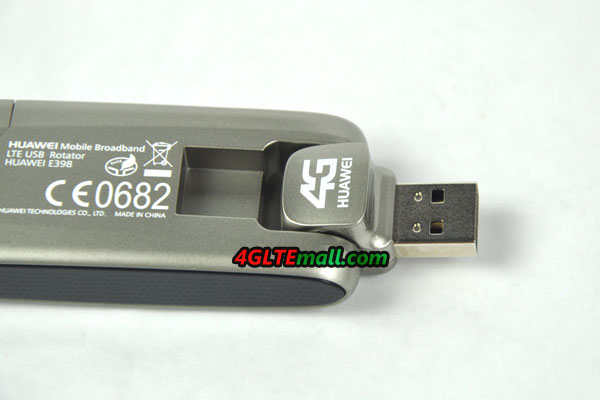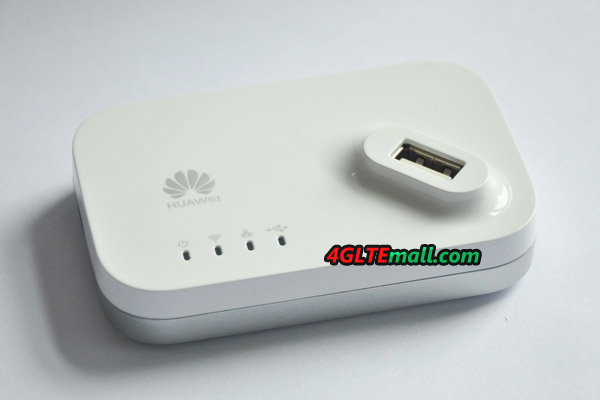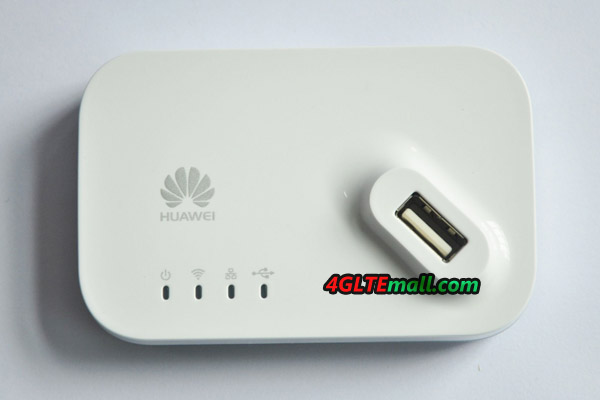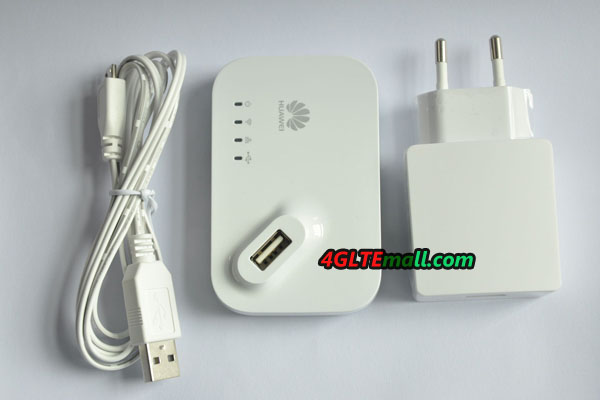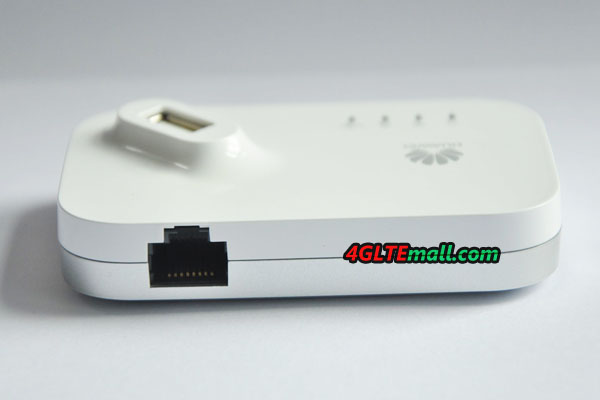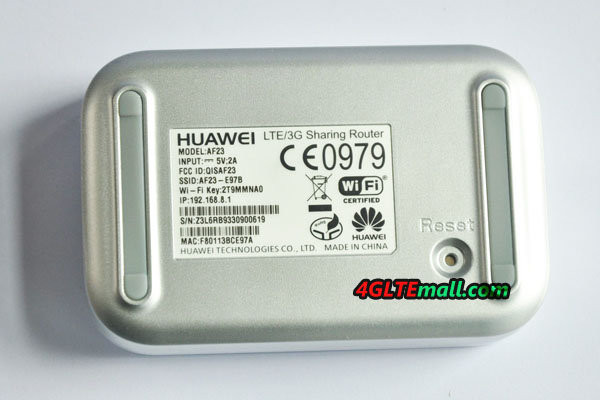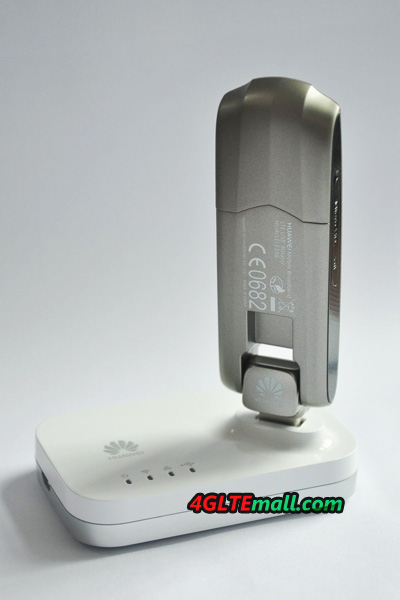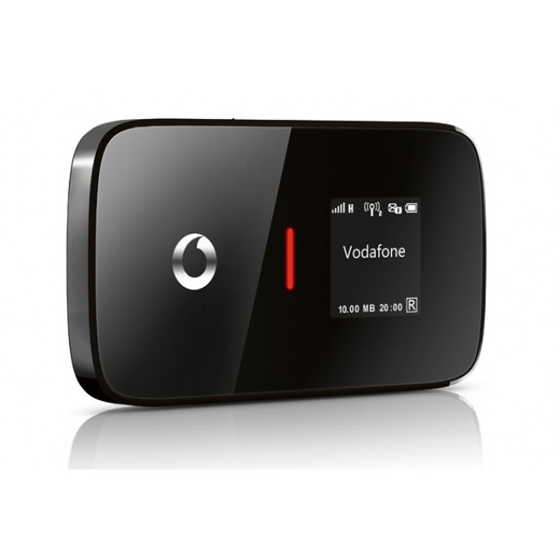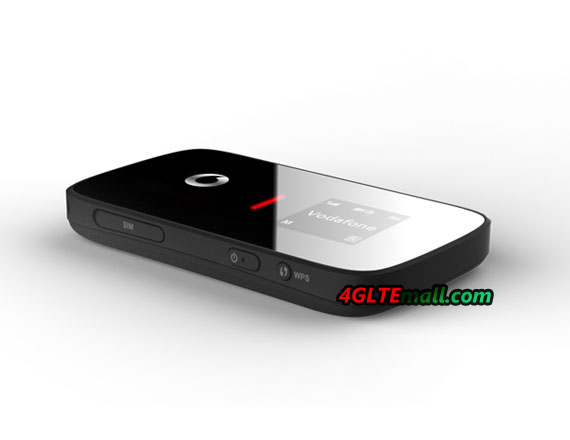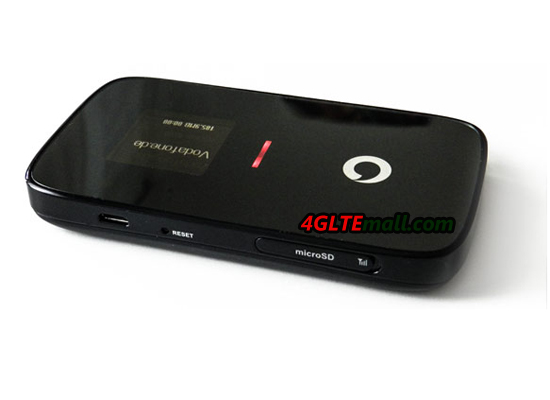| Operator | Duplexing | Spectrum | |
| Tigo | |||
| Personal | |||
| Cable and Wireless Panama | |||
Category: 4G Technology
Huawei E398S-81 4G LTE FDD TDD USB Surfstick Review
Comparing with Huawei E398 other branch models, such as Huawei E398u-1, E398u-18 and E398u-15, Huawei E398s-81 should be a special one, it’s not because Huawei E398s-81 has different appearance as other models, it’s due to Huawei E398s-81 supports the TDD & FDD LTE band simultaneously, which covers the 4G LTE TDD 2300/2600MHz and FDD 2600MHz.
As the one of the most frequency bands for TDD, band 38 (2600MHz) and band 40 (2300Mhz) are invested by many operators who are planning or already launched TDD networks.
Today, we get the Huawei E398s-81 4G LTE TDD FDD Surf stick with HUAWEI logo on it. It seems that it’s SIM card free and unlocked to any operators. Usually, if there is an operator’s logo on HUAWEI E398 modem, it may be a locked one, but the modem could be unlocked by some methods.
From the appearance, we could see that HUAWEI E398s-81 is just like other E398 branch models, with the rotatable USB design. There is only HUAWEI 4G on the USB. No other logo was printed on the back.
As previously mentioned, Huawei E398s-81 could support the LTE bands/Spectrum above: 4G LTE FDD 2600MHz and TDD 2300/2600MHz. This should be the most important difference between HUAWEI E398u-1, E398u-15 and E398u-18.
With same appearance of E398u-11 and E398u-15, Huawei E398s-81 has two external antenna connectors beside the two sides of Micro SD slot. If user wants to use data card with MIMO technology, HUAWEI E398s-81 is a good option optional. Here now, only few models of 4G LTE USB Surfstick are available on the market for both TDD and FDD networks. HUAWEI E398s-81 should be a good one based on HUAWEI prestige.
Unlike other E398 Modems, Huawei E398s-81 could not work with 3G UMTS network or 2G GSM/GPRS network. So Huawei E398S-81 could only work on 4G LTE networks. If 4G networks are not available in certain place, HUAWEI E398s-81 can’t work. So users may consider this before they buy it.
As the brother model, Huawei E392 4G FDD TDD multi-mode data card also has one similar model, the model number is Huawei E392u-92. HUAWEI E392u-92 supports 4G TDD 2300/2600 Mhz, but HUAWEI E392u-92 can’t support 4G FDD networks.
If you want know more details of them, welcome to buy it from www.4gltemall.com .
Huawei First Industrial LTE Small Cell Router Release
HUAWEI, the world’s top telecommunication equipments vendor, released the world’s first industrial LTE small cell router on April 15, 2013. The model number of the LTE Router is ATN905.
Different from other 4G LTE Routers, HUAWEI ANT 905 is to help small base stations to obtain high-rate media access across a variety of scenarios, allowing operators to extend backhaul network coverage.
Since many GCC service providers are trialing small-cell technology, HUAWEI believes simultaneous evolution to LTE will create further demand for solutions like the HUAWEI ATN 905.
Designed to meet the requirements for large base station router to deploy into small base, Huawei ATN 905 could support any media access, including fibre, GPON and xDSL, to offer additional resources for the existing network. HUAWEI ATN 905 has special features that it could get power supply through Ethernet ports, and plug-and-play.
HUAWEI ATN 905 should not be the last small cell router, following this model, there will be more and more ATN series LTE routers. It’s said ATN 905 could provide End-to-end IP RAN mobile backhaul solution with existing ATN products.
In addition, the ATN 905 OAM (operations, administration and management) functions can be used to monitor Ethernet faults, allowing operators to quickly locate problems in VIP private-line services, according to Huawei.
What’s the difference between ZTE MF880 and ZTE MF820S2?
As one of the 4G LTE modems from ZTE, the TDD modem ZTE MF820s2 may not be well known because it’s born for China Mobile 4G LTE networks. ZTE MF820s2 looks very similar to ZTE MF820, they are using the same appearance module, but inner parts are completely different. ZTE MF820 is for FDD network while MF820s2 works for TDD & FDD.
There is another 4G TD-LTE modem ZTE MF880, which is also FDD compatible. Today, we will have a look at what’s the difference between ZTE MF820s2 and MF880.
Frequency Bands
Frequency band should be the key difference between similar 4G modems, even though some modems looks almost the same. The frequency band decides where could work or not, and which operators they could support. ZTE MF820s2 supports FDD 2600MHZ and TDD 1900/2300/2600MHz. The band 1900MHz is a special band that very operator has chose as their 4G network spectrum. So many other 4G modems could replace ZTE MF820s2 if the band 1900MHz is not a must frequency. ZTE MF880 could also support TDD 2300/2600 MHz, but it cannot work with band 1900MHz. As a TDD and FDD surfstick, ZTE MF880 also supports FDD800/2600MHz. So when users don’t require modem to support 1900Mhz, ZTE MF880 could fully replace MF820s2.
4G LTE Speed
As standard 4G USB modems, ZTE MF880 and MF820s2 both supports the TDD and FDD network. However, under the two technologies, the data transmission rates are different. When working on FDD network, the peak download speed could reach 100Mbps while upload speed up to 50Mbps. But if on TDD networks, maximum download speed could reach 68Mbps and upload speed could reach 17Mbps. By the way, the speeds are only theoretical speeds. In real practice, the network can’t be perfect as we wish; the link speeds may vary time to time.
External Antenna and MicroSD card
It’s a pity that both ZTE MF880 and MF820s2 both don’s have connector for external antenna. And we didn’t find any place to plug the MicroSD card. So they couldn’t use as flash memory card.
USB Design
ZTE MF880 and MF820 are both under design of 2D USB design. The USB is rotatable for 270 degrees. This design will help users to use more space when plug to PC.
We can’t make conclusion that which is better. They are in same brand and could meet different requirements from users or operators. So it would be better to know more about the difference between similar models. If you want to check more 4G LTE modems, welcome to land www.4gltemall.com
LTE Category Data rates and MIMO Antenna
|
LTE UE category data rates |
|||||
|
CATEGORY |
1 |
2 |
3 |
4 |
5 |
|
Downlink |
10 |
50 |
100 |
150 |
300 |
|
Uplink |
5 |
25 |
50 |
50 |
75 |
|
LTE UE category modulation formats supported |
|||||
|
CATEGORY |
1 |
2 |
3 |
4 |
5 |
|
Downlink |
QPSK, 16QAM, 64QAM |
||||
|
Uplink |
QPSK, 16QAM |
QPSK, |
|||
|
16QAM, |
|||||
|
64QAM |
|||||
|
LTE UE category MIMO antenna configurations |
|||||
|
CATEGORY |
1 |
2 |
3 |
4 |
5 |
|
2 Rx diversity |
Assumed in performance requirements across all LTE UE categories |
||||
|
2 x 2 MIMO |
Not |
Mandatory |
|||
|
supported |
|||||
|
4 x 4 MIMO |
Not supported |
Mandatory |
|||
Achievable LTE Peak Data Rates
| Achievable LTE Peak Data Rates | |||
| Accounts for overhead at different bandwidth & antenna configurations | |||
| DL | UL | ||
| Bandwidth | 2 X 2 | 4 X 4 | 1 X 2 |
| 5 MHz | 37 Mbps | 72 Mbps | 18 Mbps |
| 10 MHz | 73 Mbps | 147 Mbps | 36 Mbps |
| 20 MHz | 150 Mbps | 300 Mbps | 75 Mbps |
HUAWEI E5776 4G LTE Cat4 Mobile WiFi Hotspot
Without any doubt, Huawei is one of the leading companies in the world when it comes to quality and innovative LTE hardware. This time, HUAWEI E5776 4G LTE Router proves it again. Let’s have a look at what the router over the competition stands and where the benefits are. In addition, you will find all relevant key data as a table in the overview.
|
LTE features and characteristics of the E5776 |
||
|
Manufacturer and type designation |
Huawei E5776 |
|
|
Download to rate |
150 Mbit/s |
|
|
Upload to rate |
50 Mbit/s |
|
|
supported LTE bands |
LTE800, LTE900, LTE1800, LTE2100, LTE 2600 |
|
|
backward compatible with: |
DC-HSPA +, UMTS, GSM frequencies (850, 900, 1800 and 1900 MHz) |
|
|
MIMO Support: |
MIMO 2×2 |
|
|
Connector for external antenna |
yes, a antenna socket TS-9 is present |
|
|
LTE category: |
LTE modem, the Category 4 (3GPP Release 9) |
|
|
Wireless |
802.11 b/g n up to 300 Mbit s, up to 10 devices simultaneously |
|
|
Chipset |
HiSilicon Hi6920 |
|
|
Other |
||
|
Battery operating time & |
Not replaceable 3300 mAh battery, up to 10 hours of run time |
|
|
Info display (front) |
1.45 inch TFT display |
|
|
Dimensions (LxWxH) |
107 mm x 66 mm x 16 mm, 150 grams |
|
|
USB standard |
USB 2.0 |
|
|
Memory card expansion |
Yes, MicroSD up to 32 GB |
|
|
Compatible Operating Systems |
All, only WLAN is mandatory |
|
|
Overview Datasheet (English) |
Not yet available |
|
|
Manual PDF |
Not yet available |
|
Since March 2013, the Chinese manufacturer Huawei starts to sell a new mobile LTE Router with built-in battery: Huawei E5776. Users could get cutting-edge technology that is packaged in a compact and very well designed housing. Highlight is almost up to 150 Mbit/s fast LTE data radio with certainly the strong 3300 mAh battery, which provides up to 10 hours operating time before the router must be connected to the power adapter again. So the Huawei E5776 is one of the first routers that are compatible with LTE 4 Category technology. With smart appearance and ability to charge power via USB like mobile phones, HUAWEI E5776 would be a shining star for the 4G consumer electronics.
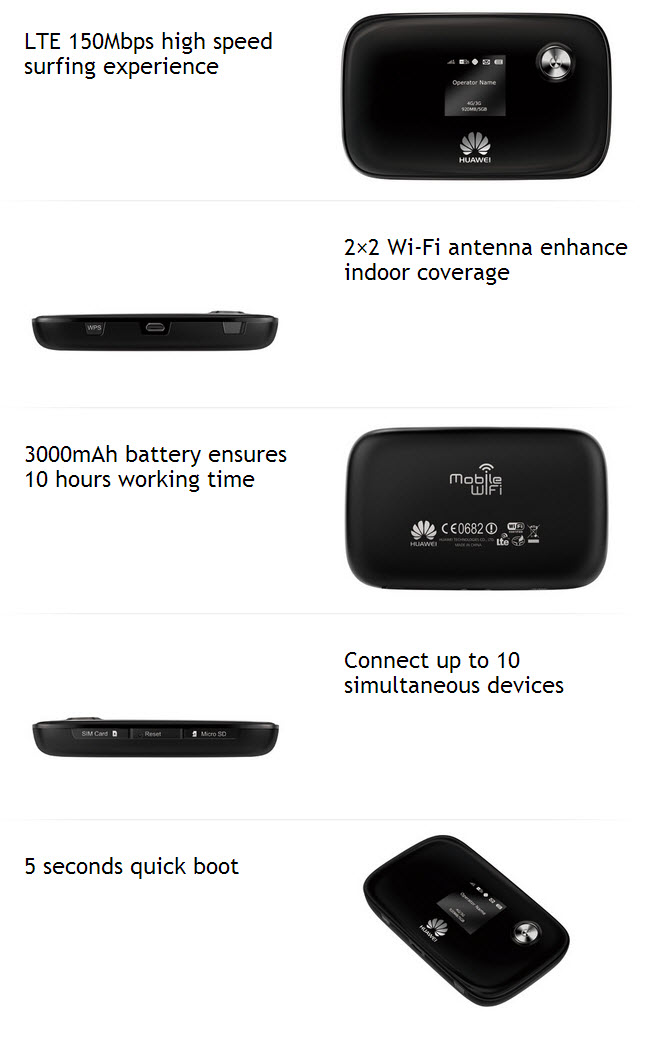
HUAWEI E5776 4G LTE Cat4 Mobile WiFi has a 1.45-inch display, this is a rather ingenious feature for the users. This feature was first installed in a LTE router Easybox 904. Also on the front is the on-off switch with integrated LED. Beside that you will find a connector for external antennas, the SIM-card slot and a slot for a microSD memory card. The micro USB port is not just for charging the built-in and non-removable batteries, but also to connect to the computer when PC doesn’t support Wi-Fi.
With Wi-Fi 802.11 b/g/n, up to 10 wireless devices could get the Internet connection from HUAWEI E5776. Bases on LTE CAT 4, it’s possible to get up to 150 Mbit/s download and up to 50 Mbit/s upload. What’s more, backward compatibility with GSM and UMTS is given. Supporting for five LTE frequency bands (800, 900, 1800, 2100, 2600 MHz), the LTE mobile router HUAWEI E5776 could use in most European and Asian countries.
Recommends the purchase?
Despite the current relatively high price, we can wholeheartedly recommend the Huawei E5776. Better technology is currently unavailable in any other LTE routers and thus the model is extremely future-proof. As a slightly cheaper alternative, HUAWEI E5776 is identical to the Speedbox LTE mini Telekom, which has a software branding. Unlocked HUAWEI E5776 should be a good option to surf under 4G networks. Here now unlocked HUAWEI E5776 is available on www.4gltemall.com . If you want to experience the fantastic speed from 4G, it’s necessary to get one.
HUAWEI AF23 4G LTE Sharing Router Review
After long time waiting, finally we get the Huawei AF23 LTE sharing dock today. Many clusters are eagerly looking forward to getting the New LTE sharing dock. Let’s have a review for this AF23 LTE Sharing router.
Like other Huawei 4G modems, Huawei AF23 is in original new box. There is plastic cover to see the AF23 directly from outside of the box. It’s in white color and looks very mini size. And at first glance at it, we are attracted by the USB slot on the face of AF23.
Open the package box, we can see the AF23 and one USB cable. Below the USB cable, it’s the power adapter. When we touch the Huawei AF23, we found it’s smaller than its predecessor Huawei D100. There are 5 indicators on the top face, besides the indicators, USB slot is there. Users could plug 3G or 4G modems here to change the 3G modem work like a 4G Wireless router.
At one side of Huawei AF23, there is an Ethernet port for connecting the network cable. So it could also change WLAN to WiFi. Jusst like the already available 4G LTE CPE Huawei B593u-12, HUAWEI AF23 supports maximum 32 users to access network.
On the back of Huawei AF23, there is a stick indicating the information about model number AF23, Power adapter information, FCC ID, SSID, Wi-Ki Key and IP address. And we can see the S/N and MAC number. There is logo of CE and RoHS, WiFi certified. At the side of the stick, there is the reset hole.
On the package box of HUAWEI AF23, it explains that HUAWEI AF23 LTE/3G Sharing Router:
* Support LTE USB dongles
* Support 3G USB dongles
* Wireless 2 x 2 design
* Up to 300Mbps transmission
* Up to 32 wireless connections
We had tested it with the HUAWEI E398 4G LTE USB Modem, and we will presents a report for HUAWEI E398 with the HUAWEI AF23 LTE Sharing Router.
Vodafone ZTE K5006Z 4G LTE USB Surfstick
Vodafone offers a new LTE Stick for the in house mobile LTE solution. The stick K5006-Z comes from the Chinese manufacturer ZTE and very similar to the K5005, which came from the manufacturer Huawei. Here you will find the most important features of K5006Z.
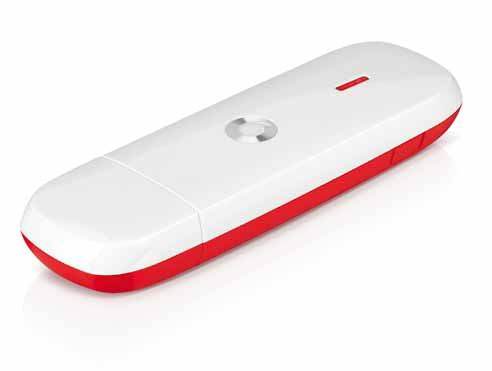
|
Features and Specifications of the Vodafone ZTE K5006 surfstick |
|
|
Manufacturer and type designation |
K5006-Z (ZTE) USB Modem |
|
Download to rate |
100 MBit/s |
|
Upload to rate |
50 Mbit/s |
|
supported LTE bands |
LTE Band 3/7/20 (800/1800/2600MHz) |
|
backward compatible with: |
DC-HSPA +, UMTS, GSM frequencies (850, 900, 1800 and 1900 MHz) |
|
MIMO Support: |
MIMO 2×2 |
|
Connector for external antenna |
yes, 2 antenna jacks TS-9 |
|
LTE category: |
LTE Category 3 (3GPP Release 8) modem |
|
Chipset |
Qualcomm MDM9200 |
|
Other |
|
|
Dimensions |
90 mm x 27 mm x 18 mm, 30 grams |
|
USB standard |
USB 2.0 |
|
Memory card expansion |
Yes, MicroSD up to 32 GB |
|
Compatible Operating Systems |
Windows XP, Windows Vista, Windows 7, Mac OS (10.4) |
|
Specs PDF |
|
Network Bands
The new model Vodafone K5006Z supports all relevant Web standards. In LTE, it could work on LTE 800MHz and LTE 2600MHz. In the latter case theoretical maximum download speeds of up to 100 Mbps and 50 Mbps in upload are possible. If LTE is not available, the stick could switch on UMTS and HSPA (DC-HSPA+). The quad-band operation for four GSM frequencies 850, 900, 1800 and 1900 MHz is provided. Even abroad, the stick should almost always provide good reception.
Optics and other features
The panel is held in the Vodafone typical design, so setting with red border. However, compared to the K5005, the sequel looks a bit clumsy and not quite as elegant. But that is a matter of taste and a score is up to you. Same with almost all surf sticks, the dongle K5006 with an additional memory card to USB memory can be upgraded. For this purpose, the device offers a MicroSD slot. Corresponding maps are mostly cheaper than USB flash drives with the same storage capacity.
Under adverse reception conditions, high speed could reach by one or two TS9 connector (MIMO) antennas plug it. Just outside of urban areas, this can be very helpful, such as in tourist areas. Also noticeable is the lower weight. Instead of 40 grams (K5005), it weighs 10 grams less. With 90 x 27 x 18 mm, it is also slightly narrower and deeper dimensions.
Those who still does not have a LTE Stick, the 4G LTE Surfstick K5006-Z is considerable. And there are unlocked Vodafone K5006Z to use any SIM card, just one pay for the dongle and never limited to any contract. For those who have the predecessor, the newer, the better.
Conclusion
A completely ordinary stick, which brings all you need for the high speed data rates needs.
Unlocked Vodafone R210 4G LTE Router Review
The mobile hotspot router for LTE users
Since early August in 2012, Vodafone offers the R210 mobile Wi-Fi hotspot with built-in battery, which could work with GSM and UMTS and LTE networks. Today, we get the unlocked Vodafone R210 here for test review. Unlocked means it’s not limited to Vodafone SIM card, it could support other operators’ SIM card when the network frequency band is compatible.
First impression
In the package you will find next to the Vodafone R210, there are a USB cable and an AC adapter to charge the battery at the socket. If desired, the device can also be charged directly to the USB port of the computer.
The device itself is about the size of a cell phone and weighs, on the basis of very generously a battery of 3000mAh capacity, a little more than other mobile hotspots. Unfortunately, the battery is permanently installed in the device, so it cannot be easily changed by the user. The casing is made entirely of plastic. However, the R210 is well in hand. The side of the device you will find the power button and the button for the WPS encryption, which makes the wireless connection to computers significantly. In addition, a small reset button has been installed – it is right next to the microUSB port to charge the battery.
Also on the other sides of the R210 are the slots for the SIM card and a microSD memory card type. If desired, an external antenna can be connected. For the usual TS9 port is hidden behind a cover.
Operation of Vodafone R210
The operation of the Vodafone R210 is actually quite simple; it is not immediately clear what position the SIM card to be inserted into the device. Although it displays a small icon next to the slot as it goes, but the icon is extremely small and barely visible. A magnifying glass might help! If you have inserted the SIM card then you have to do is to run the hotspot with a short press on the power button. Then chooses the R210 into the best available wireless network – ideally, of course, the LTE network, if available locally. Connection settings, such as the APN must be entered only when a SIM card from another provider is used – which is generally no problem, because the Vodafone R210 is SIM unlocked. Vodafone cards generally require no configuration.
General information about the current wireless connection will be displayed directly on the screen of the Vodafone R210. These include the online time, the data volume, the current battery charge level or the network technology that is being used by the device. On request, you can also use a corresponding app for Apple iOS or Android smartphones and tablets, download from the respective app store and view the data directly on the smartphone. If you want to make any major settings, but this must still be done via the web interface in the browser. To this are added in the address bar “vodafonemobile.wifi” and after entering the password “admin” are various configuration options given. It can be determined, for example, that the mobile hotspot only uses the LTE network and not to fall back to the 3G or 2G network.
Power and data rates
Let’s talk about data rates. Technically speaking, the Vodafone R210 is perfectly equipped: The integrated modem LTE can handle up to 100 Mbit/s download and affairs up to 50 Mbit/s upload, and if the network and mainly used the plan, this also allows for data rates. In the UMTS network figure is still 43.2 Mbit/s based on the possible data accelerator DC-HSPA+. In a pinch, of course, also the 2G network can be used – here, then with EDGE about 250 kilobits per second.
In my test, I used a SIM card from Vodafone, which supports up to 50 Mbit/s downstream. In addition, tests were conducted in the telecommunications network; the SIM card is limited to 100 Mbit/s. In 4G mode (LTE), it quickly became apparent that it is not about the power or the rate is the limiting factor, but the wireless interface of the Vodafone R210: more than 30 Mbit/s are possible. A look at the technical data also opens soon discover why this is so: While the router supports Wi-Fi to the current n-standard, but only with a maximum of 72 MBit/s – which explains the low net data rates. That’s a shame, but for most users, 30 Mbit/s is also likely to to be perfectly adequate. In the UMTS network in the telecom, Speedtest incidentally reached almost 28 Mbit/s. A use of a modem via USB is not possible; the USB port is only for power.
Conclusion for Vodafone R210 4G Hotspot Router
The reception of Vodafone R210 is absolutely fine, but sets no new standards – in LTE and UMTS network, it could beat Vodafone K5005 4G Surfstick. Nevertheless, the reception is better than most smartphones. The internal battery is 3000mAh with pocket size and it kept six and a half hours of continuous use in test. This is considerably longer than most by keeping other mobile hotspots.
To sum up, the Vodafone R210 is a highly recommended device. Finally it is a mobile hotspot, with LTE, UMTS and GSM combines all three wireless standards in one device and also confident in continuous operation. The Vodafone 4G Mobile Wi-Fi R210 allows you to connect to the internet with 4G speeds of the smartphone, the tablet, or laptop. If you need one, welcome to shop from www.4gltemall.com
